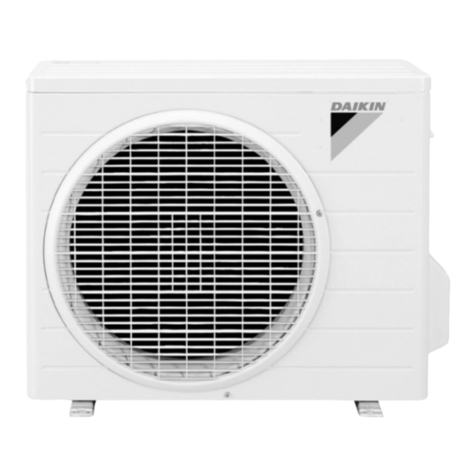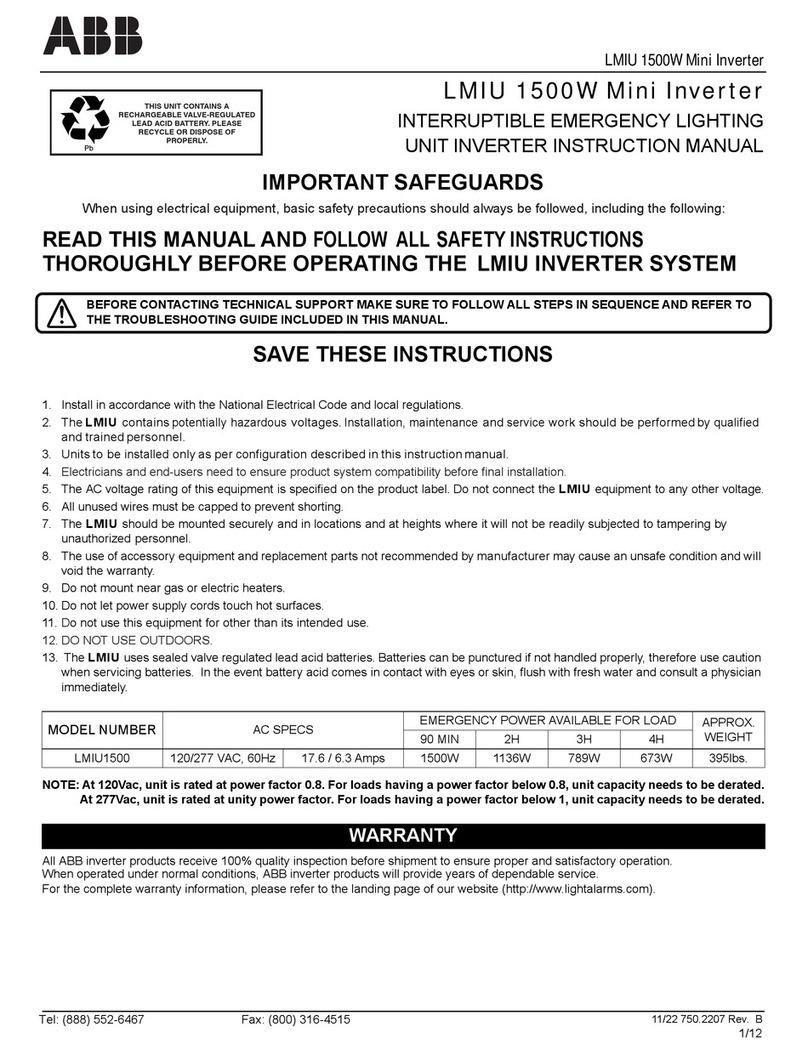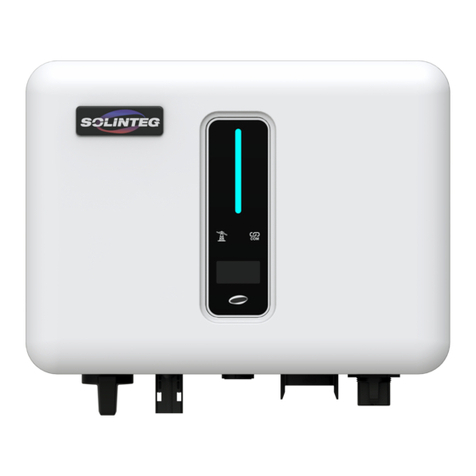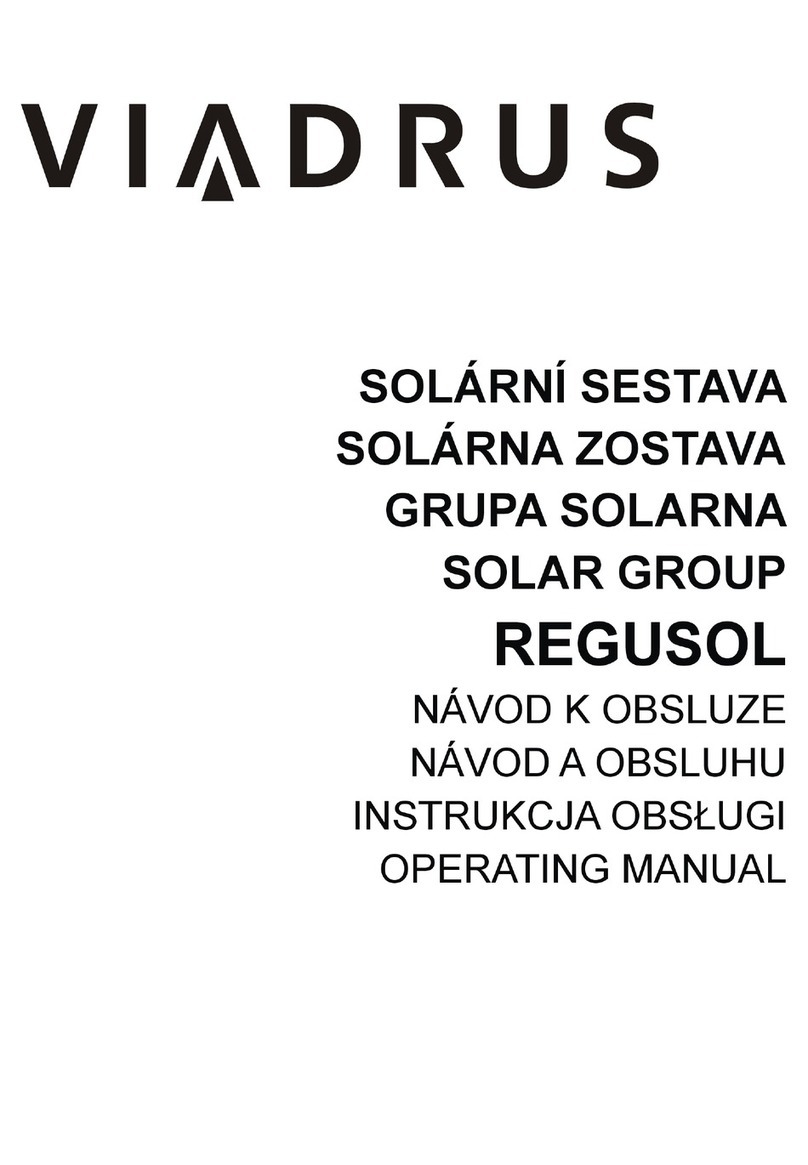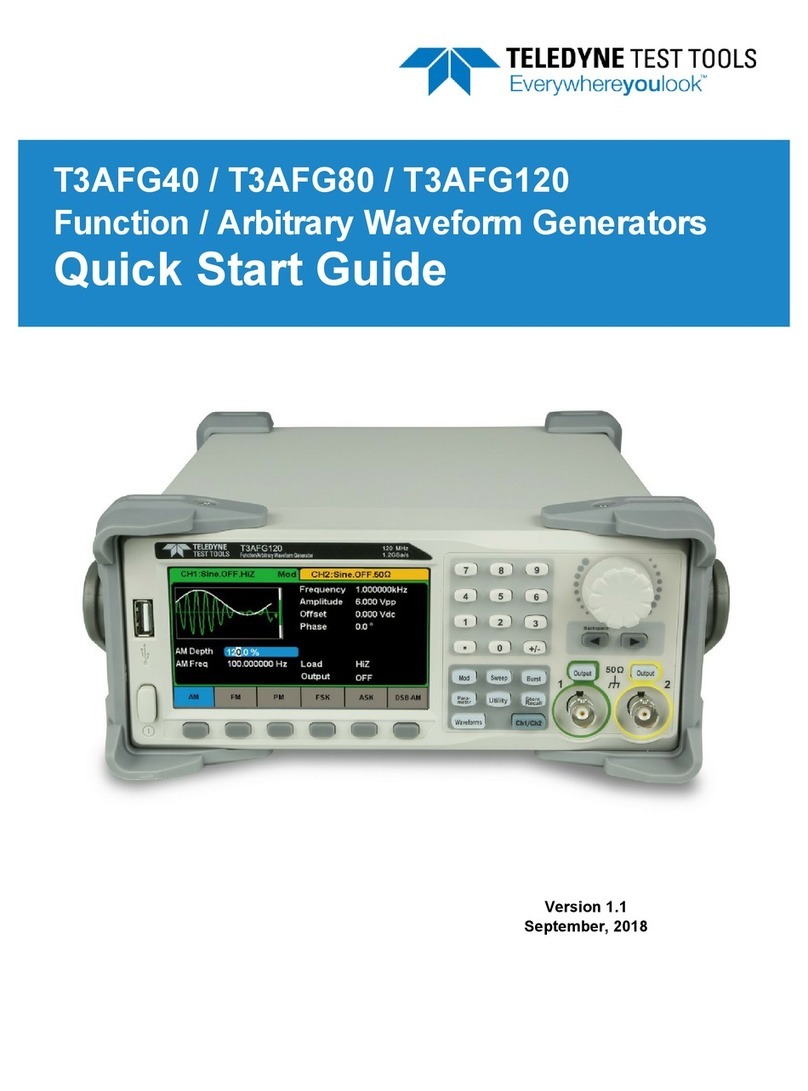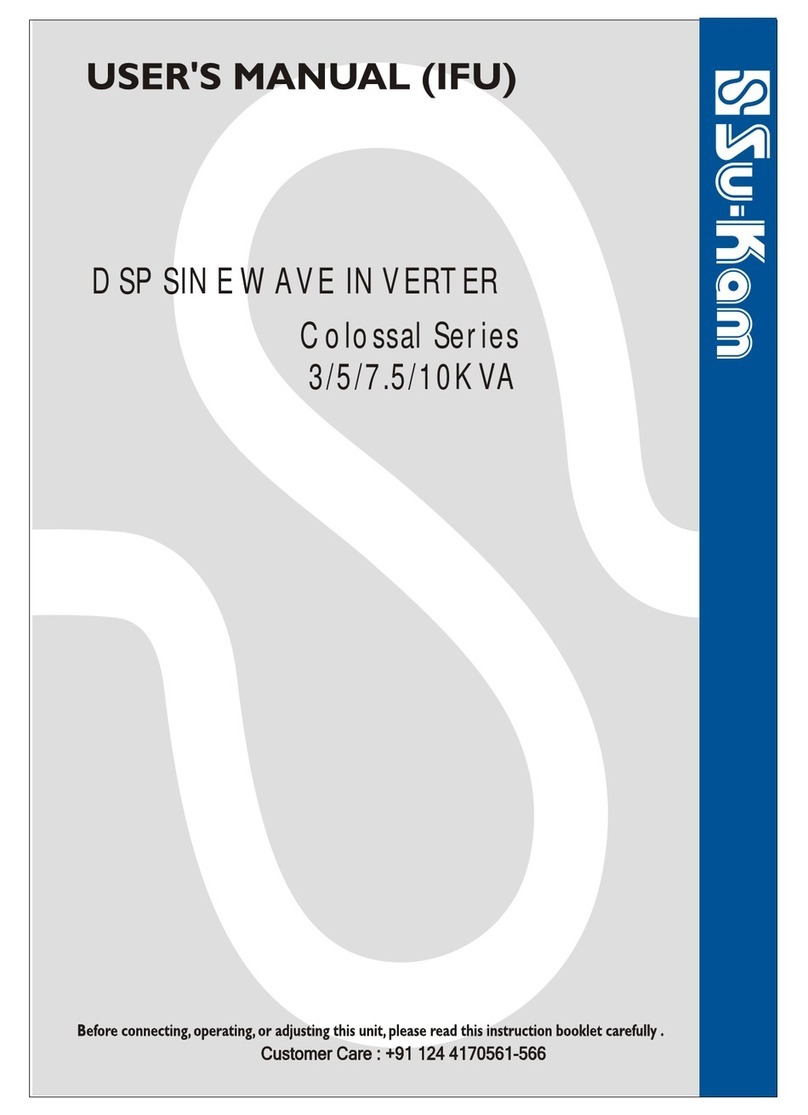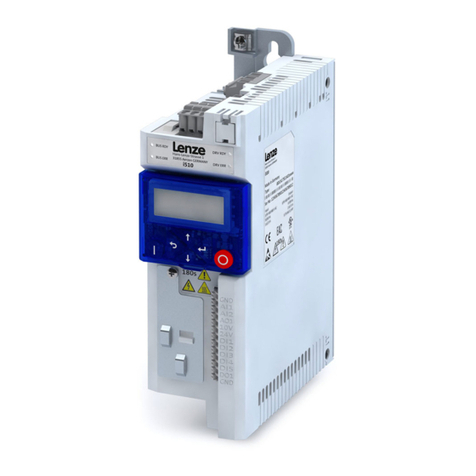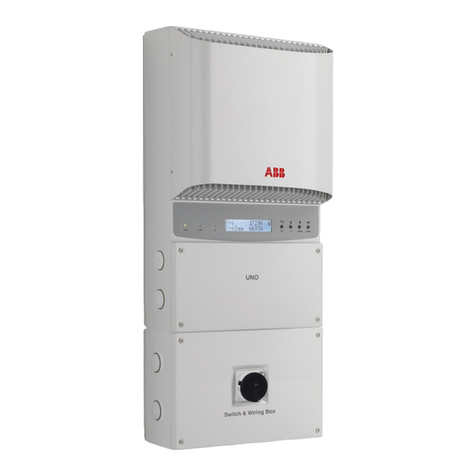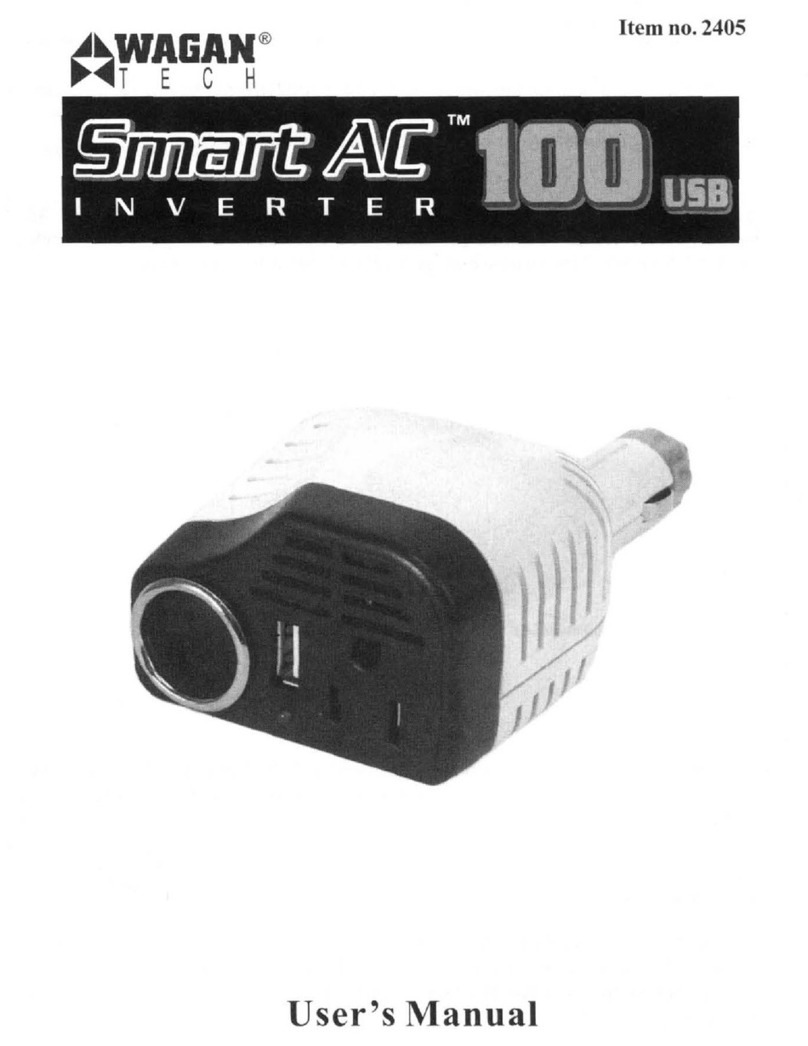CG Noise VCA User manual

Modular
Noise VCA
Noise Generator with state variable VCF and VCA
1. Introduction
An all-in-one noise 'voice'. A white noise generator followed by a state-variable VCF (switchable
high-, band-, or lowpass characteristic) with adj stable resonance (Q) and a VCA makes this versatile
mod le ideal for most standard noise applications. The integrated filter provides a wide range of rich
and colo rf l noise so nds. The VCF has a 2nd inp t, allowing one to combine external a dio with the noise, or to replace the
VCF's noise inp t completely with an external so rce.
The VCA mode can be switched between exponential or linear characteristic, with a m ting option when the switch is in its middle
position; the 'Offset' knob allows one to shift the VCA's start point by adding a negative or positive voltage to the VCA's CV inp t.
2. Features
–Noise generator with integrated state-variable VCF and VCA
–3 direct o tp ts:
◦White Noise
◦S b F (Random CV)
◦VCF O t (Colo red)
–Switchable VCF characteristic:
◦Highpass
◦Bandpass
◦Lowpass
–Adj stable filter resonance (Q)
–Switchable 2nd VCF signal inp t:
◦White noise only
◦White noise & external signal combined
◦External signal only
–VCA with switchable CV mode:
◦Linear CV
◦0 (m te)
◦Exponential CV
–Available in banana or 3,5mm minijack version
–E rorack mod le
–Width: 10 HP
–Dimensions: 128,5 mm x 50,5 mm
–Depth: ≈40mm
–S pply voltage: ±12V
–Power cons mption: ≈42mA (positive rail)
Banana jack version Minijack version Drawing
1

Modular
3. Functions
VCF C toff Freq ency The filter's c toff freq ency is adj stable
from ≈ 40 Hz to 15000 Hz.
White Noise O tp t Direct o tp t. The amplit de is ≈ 8-10 Vpp.
S b F (Random) O tp t Direct O tp t. This o tp t provides a
s ba dio random CV for mod lation. The amplit de is ≈8-10Vpp.
The amplit de and characteristic is adj stable with trimmer
23456789
21
10 11 13 14 15 16 17 18 19
20 22
12
Objekt in Pfade:
4
4
14
Falsche Zahlen
4
on the
o ter PCB (Please read chapter
4. Adjustment
)
VCF O tp t Direct o tp t for the VCF. Depending on the position of
switch (VCF in), either filtered noise, a filtered external a dio
signal – inp t on socket 'ext. VCF In' - or a combination of both is
available. The filter characteristic can be chosen with the switch 'VCF
Mode' and variied with the knob Q (Resonance)
2 3 456789
21
10 11 13 14 15 16 17 18 19
20 22
12
Objekt in Pfade:
4
4
14
Falsche Zahlen
; its freq ency
is set with the 'VCF C toff Freq ency' knob and can be mod lated
by an external CV signal applied to the 'VCF CVin' socket
(mod lation depth and polarity adj stable by knob 'VCF CVin' ) or
to the 'VCF 1V/Oct.in' socket .
VCF CV In Polarizing inp t level control knob for the VCF
mod lation voltage applied to the 'VCF CVin' socket . With the
knob in centre position (denter locked), mod lation depth is 0; by
t rning it CW, the mod lation depth will increase; by t rning it CCW
the mod lation depth will increase, however reacting inverted to the CW position.
Q (Resonance) By t rning this knob clockwise the filter resonance increases, p to near self-
oscillation.
VCF CV Inp t VCF c toff freq ency mod lation inp t. Mod lation depth and polarity can be
adj sted by knob 'VCF CVin' .
VCF In VCF a dio inp t selector. With this switch in pper position 'Noise',
white noise
is the inp t
for the filter. With the switch in middle position 'Noise+ext.' , a combination of white noise and the
external a dio signal applied on the 'ext. VCF In' socket feeds the filter's inp t. With the switch
in lower position 'ext.', only the external a dio signal is being processed by the VCF.
VCF Mode Switch Selects the VCF's operation mode:
•Switch in pper position: Highpass filter
•Switch in middle position: Bandpass filter
•Switch in lower position: Lowpass filter
2
23456789
21
10 11
12
13 14 15 16 17 18 19
20 22
12
Objekt in Pfade:
23456789
21
10 11
12
13 14 15 16 17 18 19
20 22
12
Objekt in Pfade:
23456789
21
10 11
12
13 14 15 16 17 18 19
20 22
12
Objekt in Pfade:
2 3 456789
21
10 11
12
13 14 15 16 17 18 19
20 22
12
Objekt in Pfade:
4
23456789
21
10 11
12
13 14 15 16 17 18 19
20 22
12
Objekt in Pfade:
4
2 3 456789
21
10 11
12
13 14 15 16 17 18 19
20 22
12
Objekt in Pfade:
4
23456789
21
10 11
12
13 14 15 16 17 18 19
20 22
12
Objekt in Pfade:
4
23456789
21
10 11
12
13 14 15 16 17 18 19
20 22
12
Objekt in Pfade:
4
2 3 456789
21
10 11
12
13 14 15 16 17 18 19
20 22
12
Objekt in Pfade:
4

Modular
VCF 1V/Octave CV Inp t The 1V/oct. tracking can be adj sted precisely by trimmer
23456789
21
10 11 13 14 15 16 17 18 19
20 22
12
Objekt in Pfade:
4
4
14
Falsche Zahlen
4
on the o ter
PCB (Please read chapter
4. Adjustment
)
VCA In Signal inp t selector for the VCA. The position of this switch determines which signal is
being processed by the VCA.
•Switch in pper position: White noise
•Switch in middle position: S b F (Random)
•Switch in lower position: VCF O tp t
Ext. VCF In 2nd external signal inp t for the VCF. This inp t allows an external a dio signal to be
fed into the VCF. This signal may replace the internal noise so rce or can be combined with it;
depending on the position of switch 'VCF In' .
Note:
This socket has no extra knob for adj sting its level.
D e to the wide range of possible inp t
signals and filter settings it may happen that the filtered signal is distorted (with high Q setting and
an inp t freq ency which is nearby the VCF's c toff freq ency) or is too low.
VCA CV in Inp t level control knob for the CV so rce applied on 'VCA CVin' controlling the
VCA's amplification (for its inp t signal selectable by switch 'VCA In' ) . In center position (denter
locked) the level is 0 and there is no CV mod lation of the VCA. By t rning the knob clockwise, the
CV will mod late the selected inp t signal. By t rning this knob co nterclockwise, the inverted CV
mod lates the VCA's inp t signal ('polarizer').
Offset VCA offset control. With this polarizing control knob either a positive or negative voltage can
be added to the VCA's CV inp t. In center position (denter locked), the offset voltage is 0. By
t rning the knob CW, a positive voltage with range p to +5V will be added, by t rning the knob
CCW, a negative voltage p to -5V is addable. By t rning this knob CW, the p re, nmod lated
VCA's inp t signal (selectable by switch 'VCF In' ) will be provided on the VCA's o tp t 'VCA O t'
2 3 456789
21
10 11
12
13 14 15 16 17 18 19
20 22
12
Objekt in Pfade:
4
- with variable amplification. In combination with an applied CV on 'VCA CVIn' , a negative
offset voltage added (t rning the knob CCW) may be sed to shift the VCA's operation point – so
that only from a certain amo nt of positive inp t CV begins to open the VCA (Example see chapter
5. Patches
Example 4).
VCA Mode With this switch the VCA's operation mode can be selected between linear CV or
exponential CV processing and 0 (m te):
•Switch in pper position: Linear
•Switch in middle position: 0 (m ting)
•Switch in lower position: Exponential
VCA CVin Control voltage inp t for the VCA. The amo nt and polarity is adj stable with knob 'VCA
CVin' .
VCA O t O tp t socket for the VCA. The position of switch 'VCA Mode' decides, which inp t
signal is being processed; controllers 'VCA CVin' (for socket 'VCA CVin' ), 'Offset' and switch
'VCA Mode' are responsible for the CV processing.
3
2 3 456789
21
10 11
12
13 14 15 16 17 18 19
20 22
12
Objekt in Pfade:
4
23456789
21
10 11
12
13 14 15 16 17 18 19
20 22
12
Objekt in Pfade:
4
23456789
21
10 11
12
13 14 15 16 17 18 19
20 22
12
Objekt in Pfade:
4
23456789
21
10 11
12
13 14 15 16 17 18 19
20 22
12
Objekt in Pfade:
4
2 3 456789
21
10 11
12
13 14 15 16 17 18 19
20 22
12
Objekt in Pfade:
4
2 3 456789
21
10 11
12
13 14 15 16 17 18 19
20 22
12
Objekt in Pfade:
4
23456789
21
10 11
12
13 14 15 16 17 18 19
20 22
12
Objekt in Pfade:
4
23456789
21
10 11
12
13 14 15 16 17 18 19
20 22
12
Objekt in Pfade:
4

Modular
Audio routing
4. Adjustment & Settings
The Noise VCA is already caref lly adj sted. No f rther calibrations sho ld be needed. In case of e.g.
nintentional adj stment, here is the description of trimmers and adj stments (o ter PCB):
B s CV off/on Please see Chapter
. Bus CV
VCF c toff freq ency 1V/oct. adj stment
1. Insert a freq ency (preferably sinewave or
triangle) of yo r favorite t ned VCO to 'ext
VCF in' with switch 'VCF In' in lower
position ('ext.'), connect o tp t 'VCF O t'
to an amplifier.
2. Bring the oscillator's freq ency in t ne with
the Noise VCA's VCF c toff freq ency – the
knob 'VCF c toff freq ency' sho ld be
almost in the middle of its range ( on
scale: ≈3-5); with the 'VCF Mode' switch
in center position ('BP') and the 'Q' knob
2 3 456789
21
10 11 13 14 15 16 17 18 19
20 22
12
Objekt in Pfade:
4
4
14
Falsche Zahlen
widely t rned clockwise (≈ '8' on scale), so
that the filter is resonating slightly. The
oscillator tone m st have its largest
amplit de when it is in pitch with the VCF's
c toff freq ency.
4
2 3 456789
21
10 11 13 14 15 16 17 18 19
20 22
12
Objekt in Pfade:
4
4
14
Falsche Zahlen
4
2 3 456789
21
10 11 13 14 15 16 17 18 19
20 22
12
Objekt in Pfade:
4
4
14
Falsche Zahlen
4

Modular
3. Apply a CV so rce (preferably a keyboard) to both the VCF's 1V/Oct CV inp t and the
VCO's 1V/oct. CV inp t.
4. Play or generate 2 alternating notes ( with a distance of 3-4 octaves); e.g. 250 Hz and 2000
Hz.
5. T ne the trimmer
23456789
21
10 11 13 14 15 16 17 18 19
20 22
12
Objekt in Pfade:
4
4
14
Falsche Zahlen
4
ntil both alternating notes have the highest amplit de, thereby tracking
the VCF's c toff freq ency – if necessary, readj st the VCF c toff freq ency with knob .
Alternatively, insert a short imp lse signal (e.g. trigger) to 'ext VCF in' with the 'Q' knob
23456789
21
10 11 13 14 15 16 17 18 19
20 22
12
Objekt in Pfade:
4
4
14
Falsche Zahlen
f lly
t rned p CW, and se the now triggered VCF as a so nd so rce (Example see nder chapter
5.
Patches
Example 3). This generated note yo can compare with a reference VCO's tone by bringing
them in t ne and applying a CV so rce to both 1V/Oct. CV inp ts; then proceed as in step 4. and
adj st trimmer
23456789
21
10 11 13 14 15 16 17 18 19
20 22
12
Objekt in Pfade:
4
4
14
Falsche Zahlen
4
.
S b F amplit de With this trimmer the S b F's o tp t (on socket 'S b F' ) amplit de and
characteristic can be moderately adj sted.
VCA 0-point Offset This trimmer determines the VCA's CV 0-point. With switch 'VCA Mode' in
pper position ('lin.'); switch 'VCA In' in pper position ('White'), the 'Offset' knob in middle
position (center locked) and no CV applied, the VCA's o tp t (socket 'VCA O t'
2 3 456789
21
10 11
12
13 14 15 16 17 18 19
20 22
12
Objekt in Pfade:
4
) signal sho ld be
as q iet as possible with no
white noise
signal passing thro gh, b t the 'Offset' knob sho ld still
react sensitively when t rned CW.
Exponential Mode 0-point Adj stment of the exponential converter's 0-point. With the 'VCA
Mode' switch in
lower
position ('exp'); the 'VCA In' switch in the pper position ('White'), the
'Offset' knob in the middle position (center locked) and no CV applied, the VCA's o tp t (socket
'VCA O t'
2 3 456789
21
10 11
12
13 14 15 16 17 18 19
20 22
12
Objekt in Pfade:
4
) signal sho ld be as q iet as possible with no
white noise
signal passing thro gh
(compare to when switch 'VCA Mode' in
middle
position ('0'), b t the 'Offset' knob sho ld still
react sensitively when t rned CW and the
white noise
signal sho ld increase slightly on the VCA's
o tp t).
Exponential Gain Adj sts the exponential converter's amplification. With 'Offset' knob t rned
f lly CW, the o tp t vol me of the VCA sho ld be the same both in 'lin.'and 'exp.' mode (compare
by toggling switch 'VCA Mode' ). With this trimmer yo can adj st the VCA's vol me in 'exp.'
mode.
VCA Inp t Gain Adj stment of the VCA's inp t signal (and therefore the lo dness of the VCA).
With knob 'Offset' f lly t rned CW p, the o tp t vol me of the VCA
2 3 456789
21
10 11
12
13 14 15 16 17 18 19
20 22
12
Objekt in Pfade:
4
sho ld have nearby the
vol me of the direkt o tp ts , or ; b t also there sho ld be no distortion for very lo d
signals (especially when an external so nd so rce is applied on socket 'ext. VCF in' .
If yo need to recalibrate the
Noise VCA
's VCA section, please follow the adj stment steps in this
order:
23456789
21
10 11 13 14 15 16 17 18 19
20 22
12
Objekt in Pfade:
4
4
14
Falsche Zahlen
4
→
23456789
21
10 11 13 14 15 16 17 18 19
20 22
12
Objekt in Pfade:
4
4
14
Falsche Zahlen
4
.
5
23456789
21
10 11 13 14 15 16 17 18 19
20 22
12
Objekt in Pfade:
4
4
14
Falsche Zahlen
4
23456789
21
10 11 13 14 15 16 17 18 19
20 22
12
Objekt in Pfade:
4
4
14
Falsche Zahlen
4
2 3 456789
21
10 11 13 14 15 16 17 18 19
20 22
12
Objekt in Pfade:
4
4
14
Falsche Zahlen
4
2 3 456789
21
10 11 13 14 15 16 17 18 19
20 22
12
Objekt in Pfade:
4
4
14
Falsche Zahlen
4
23456789
21
10 11 13 14 15 16 17 18 19
20 22
12
Objekt in Pfade:
4
4
14
Falsche Zahlen
4

Modular
5.Patches
Simple patches (with other CG Prod cts' mod les)
Patch Description A dio Link
1. Peak & Hold is controlling the Noise VCA
In this standard patch the Peak&Hold's
'Release' o tp t controls the VCA with a
dynamic envelope shape, while the
Peak&Hold's 'P+H' o tp t is mod lating the
VCF's c toff freq ency.
Peak&Hold inp t:
Dr m machine
http://www.cg-
prod cts.de/A dio/NoiseVCA_P
-H528.mp3
2. 2 So nds combined
In this example the XR22 VCO FT's
sq arewave o tp t is applied to 'ext VCF In';
the Peak&Hold is mod lating the Noise
VCA's VCF c toff freq ency and the VCA.
Peak&Hold inp t:
Dr m machine
http://www.cg-
prod cts.de/A dio/NoiseVCA_X
R22_PH-530.mp3
3. VCF triggered with imp lses
Short imp lse signals can be sed to trigger
the VCF, generating 'ping' like so nds. Here
the Peak&Hold's imp lse o tp t is sed to
trigger the VCF; its 'P+H' o tp t is
mod lating the filter's c toff freq ency.
Peak&Hold inp t:
Dr m machine
http://www.cg-
prod cts.de/A dio/NoiseVCA_V
CFtriggered-535.mp3
4. VCF & VCA working independently
When sing the VCA with white noise (or
S b F) as signal so rce, the VCF can be sed
completely independent to process another
signal; or the VCA can generate dynamic
accents to the 1st (VCF) a dio o tp t - by
shifting the VCA's offset level. Here the
VCF's a dio inp t is the imp lse-triggered
Delay 1022.
Peak&Hold inp t:
Dr m machine
http://www.cg-
prod cts.de/A dio/NoiseVCA_
Delay1022_PH-0539.mp3
5. Sb F mod lating CVs
The 'S b F' o tp t can be sed to mod late
the VCF c toff freq ency and/or the VCA -
random so nds s ch as 'th nder' or
'crackling' can be generated.
http://www.cg-
prod cts.de/A dio/NoiseVCA_S
bF-542.mp3
6

Modular
. Bus CV
J mper "JP1" in "off" position (PCB ): The B s CV is
not connected.
J mper "JP1" in "on" position (PCB side): The B s
CV is controlling the VCF's c toff freq ency.
7. Contact & Support
Christian Günther
Forster Str. 5
1 999 Berlin
www.cg-products.de
Phone: ++49 3 61286299
Mobile ++49 178 7699267
Product webpage: http://www.cg-products.de/module/noisevca/
This is Revision0.9
© Christian Günther May 2 18
7
Table of contents
Popular Inverter manuals by other brands
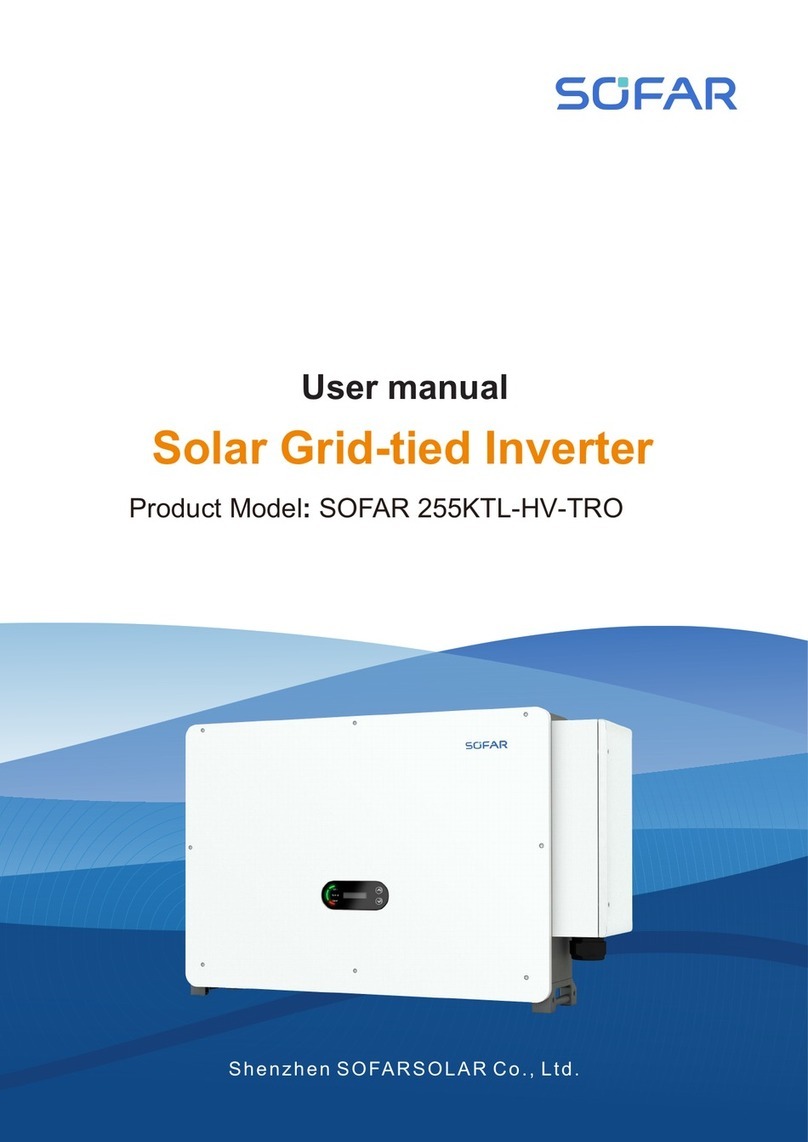
Sofar
Sofar 255KTL-HV-TRO user manual

WEG
WEG AG10 Series Installation, operation and maintenance manual
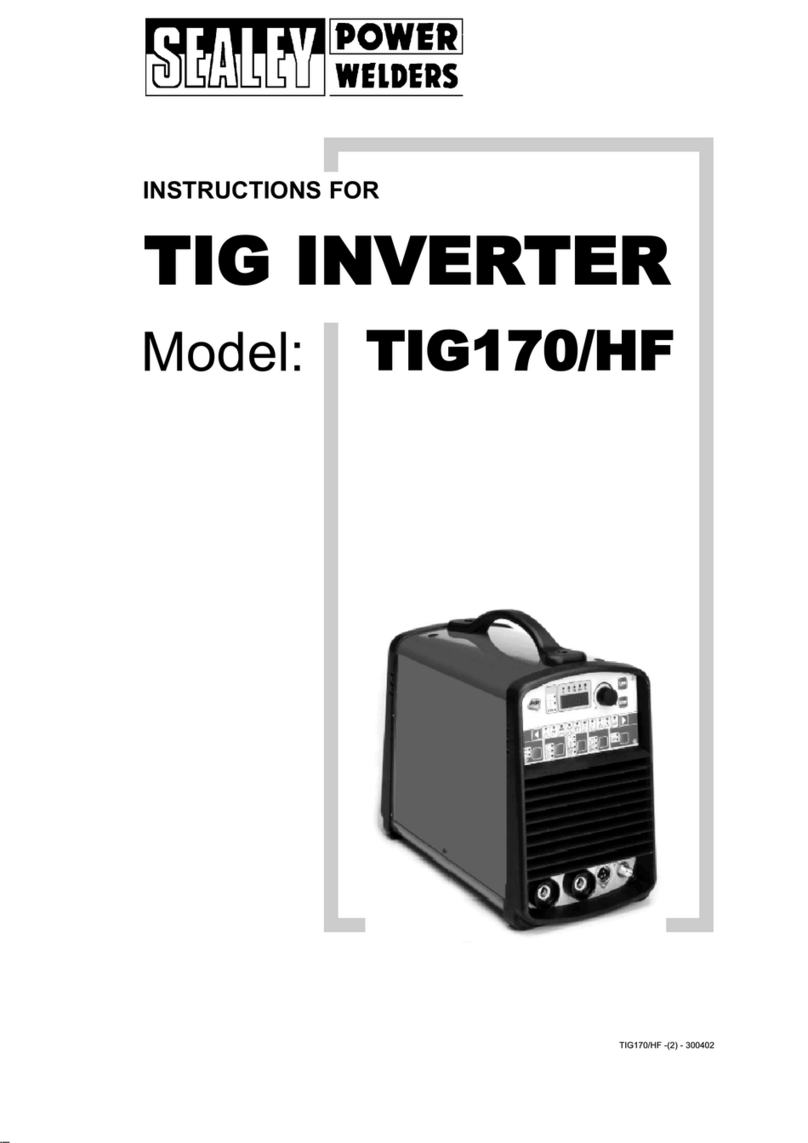
Sealey
Sealey TIG170/HF instructions
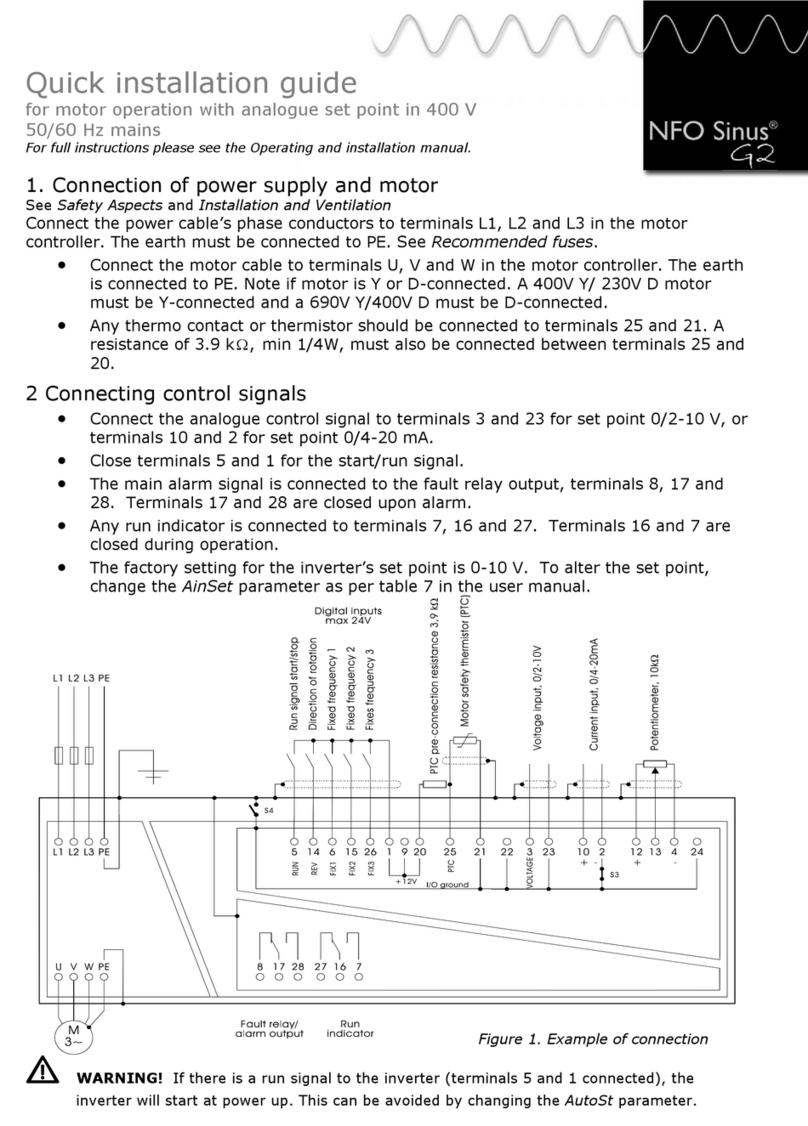
NFO
NFO SINUS G2 Quick installation guide
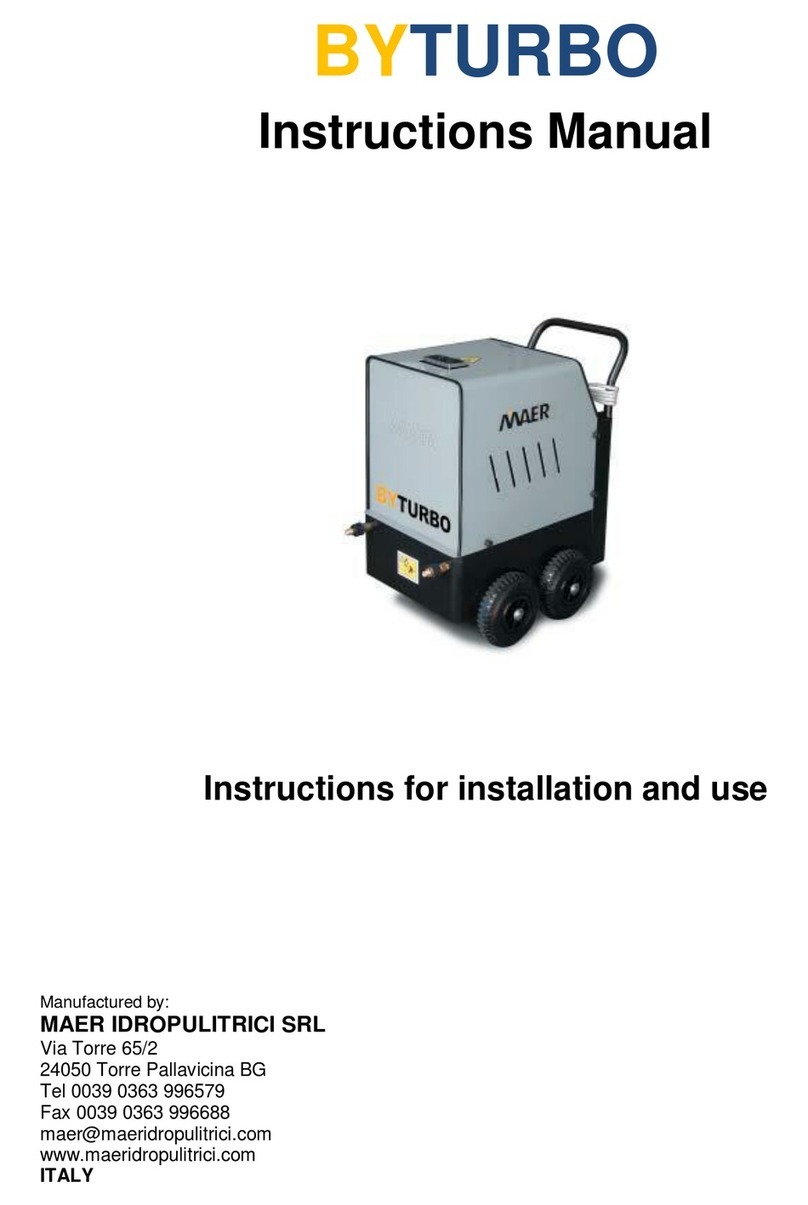
MAER IDROPULITRICI
MAER IDROPULITRICI BYTURBO instruction manual
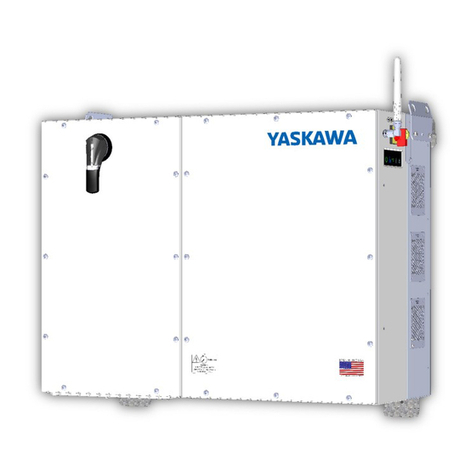
YASKAWA
YASKAWA SOLECTRIA XGI 1500 Series Installation and operation guide
